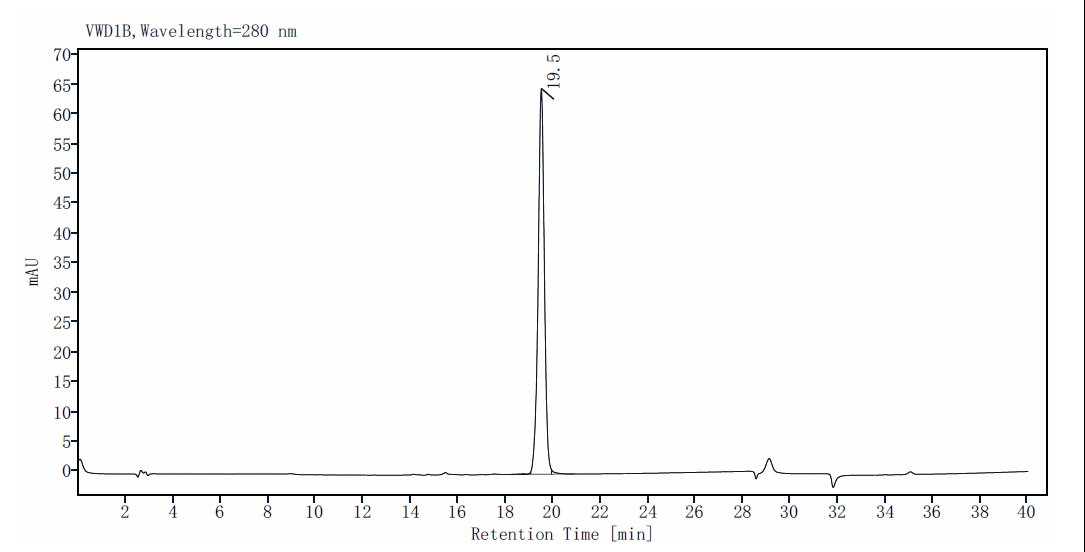 全部商品分类
全部商品分类


 下载产品说明书
下载产品说明书 用小程序,查商品更便捷
用小程序,查商品更便捷


 收藏
收藏
 对比
对比 咨询
咨询58-82kDa(Reducing)
Ser31-Tyr538
SVLRYDDFHIDEDKLDTNSVYEPYYHSDHAESSWVNRGESSRKAYDHNSPYIWPRNDYDGFLENAHEHHGVYNQGRGIDSGERLMQPTQMSAQEDLGDDTGIHVIPTLNGDDRHKIVNVDQRQYGDVFKGDLNPKPQGQRLIEVSVEENHPFTLRAPIQRIYGVRYTETWSFLPSLTCTGDAAPAIQHICLKHTTCFQDVVVDVDCAENTKEDQLAEISYRFQGKKEADQPWIVVNTSTLFDELELDPPEIEPGVLKVLRTEKQYLGVYIWNMRGSDGTSTYATFLVTWKGDEKTRNPTPAVTPQPRGAEFHMWNYHSHVFSVGDTFSLAMHLQYKIHEAPFDLLLEWLYVPIDPTCQPMRLYSTCLYHPNAPQCLSHMNSGCTFTSPHLAQRVASTVYQNCEHADNYTAYCLGISHMEPSFGLILHDGGTTLKFVDTPESLSGLYVFVVYFNGHVEAVAYTVVSTVDHFVNAIEERGFPPTAGQPPATTKPKEITPVNPGTSPLLRYGGGSDYKDDDDK

58-82kDa(Reducing)







2μg (R: reducing condition, N: non-reducing condition).
"}]

Varicella-zoster virus (VZV) serves as the prototype for the alphaherpesvirus subgroup, classified under the Varicellovirus genus. The VZV genome encodes a minimum of six glycoproteins: gB, gC, gE, gH, gI, and gL. Among these, gE (formerly known as gpI or gp98) is the most abundant in the virion envelope and is the primary glycoprotein present on the surface of infected cells.
VZV gE is a classic type I transmembrane glycoprotein, extensively modified by N-linked and O-linked glycosylation, sialylation, and sulfation. It also features a phosphorylation site for serine/threonine casein kinase II. Additionally, gE has the capacity to form homodimers that undergo tyrosine phosphorylation.
During infection, VZV gE interacts with VZV gI to form a protein complex. Notably, gE on the surface of infected cells has been identified as an Fc receptor for nonimmune IgG. Homology studies indicate that gE exhibits structural characteristics akin to those of several nonviral cell surface receptors, such as the Fc receptor (FcγRII) and the low-density lipoprotein (LDL) receptor.

Reconstitute at 0.1-1 mg/ml according to the size in ultrapure water after rapid centrifugation.

·12 months from date of receipt, -20 to -70 °C as supplied.
·1 month, 2 to 8 °C under sterile conditions after reconstitution.
·Please avoid repeated freeze-thaw cycles
Julie K. Olson, Richard A. Santos, Charles Grose, Varicella-Zoster Virus Glycoprotein gE: Endocytosis and Trafficking of the Fc Receptor, The Journal of Infectious Diseases, Volume 178, Issue Supplement_1, November 1998, Pages S2–S6.

参考图片
2μg (R: reducing condition, N: non-reducing condition).
Immobilized VZVgE Flag Tag Protein (Cat. No. UA030073) at 2.0μg/mL (100μL/well) can bind Varicella-zoster virus (VZV) / HHV-3 gE / glycoprotein E Antibody, Mouse MAb with EC50 of 1.22-2.62ng/mL.
The purity of VZVgE Flag Tag Protein is more than 95% determined by RP-HPLC.



